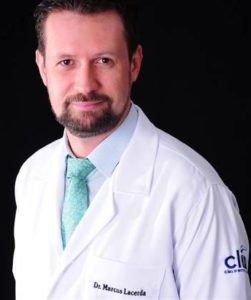
Please tell me a little about yourself
My name is Dr. Marcus Lacerda and I am a physician studying clinical complications in vivax malaria and new potential antimalarial drugs. I’ve been working in the Brazilian Amazon for the past 18 years, and I have a double affiliation with Fundação Oswaldo Cruz (Fiocruz) and Tropical Medicine Foundation Dr Heitor Vieira Dourado.
Could you please describe the collection you moderated for Malaria journal, “Time to Go for Vivax”?
The manuscripts featured in this collection have been hand selected from conference presented on the 6th International Conference on Plasmodium vivax Research (ICPVR 2017) held in Manaus, on the importance of eliminating this species as well. They are all excellent studies. Vivax is not often the focus of malaria funding worldwide, and now Malaria Journal is trying to emphasize the importance of this type of malaria infection, hoping that more researchers are aware of the huge gap in knowledge about this disease.
Could you please describe what vivax is for our readers?
Plasmodium vivax is different from Plasmodium falciparum, being less severe than the last, but it is more difficult to treat because it takes a longer period of treatment. Plasmodium vivax infects hepatocyte cells within the liver, producing dormant stages (hypnozoites) which are responsible for relapses over time, usually 2-3 months after treatment. This relapse presents itself similarly to that of a reinfection, so it can be difficult to diagnose and provide the correct medication for treatment.
What is something that you think is an important theme for malaria researchers to focus on?
It’s very important to develop new technologies to identify asymptomatic infections, as vivax infections often can be. This technology needs to be more sensitive than the available thick blood smear.
Another issue in treating malaria is patient compliance. Primaquine is the only drug that works in treating vivax hypnozoites, but it must be taken for 7-14 consecutive days. Patients often stop after day 3, when there is no more fever.
There is a new drug in development called tafenoquine, which is currently in the process of registration by FDA. This drug has a much higher half-life than Primaquine, so it only needs to be dosed once, which can help with patient compliance.
The one problem that persists however is that anti-hypnozoite drugs may cause severe anemia in patients with a genetic deficiency of the enzyme called G6PD. Therefore, the safe use of these drugs requests the screening before the prescription, which is not usually available in most of the endemic areas.
Click here to read the “Time to Go for Vivax” article collection in Malaria Journal.
Dr. Marcus Lacerda is a physician studying clinical complications in vivax malaria and new potential antimalarial drugs besides being an expert in Infectious Diseases. He works at Tropical Medicine Foundation Dr. Heitor Vieira Dourado / Instituto Leônidas & Maria Deane (Fiocruz, Amazon) in Manaus. In addition, he is an adjunt professor at Kent State University. He is also a member of the Brazilian Ministry of Health Malaria Control Program, and member of the Expert Scientific Advisory Committee from Medicines for Malaria Venture (MMV) and WorldWide Antimalarial Resistance Network (WWARN).

Thank you so much for your information which is very helpful for me. your site has nice content. please keep us updated !! It is really informative.